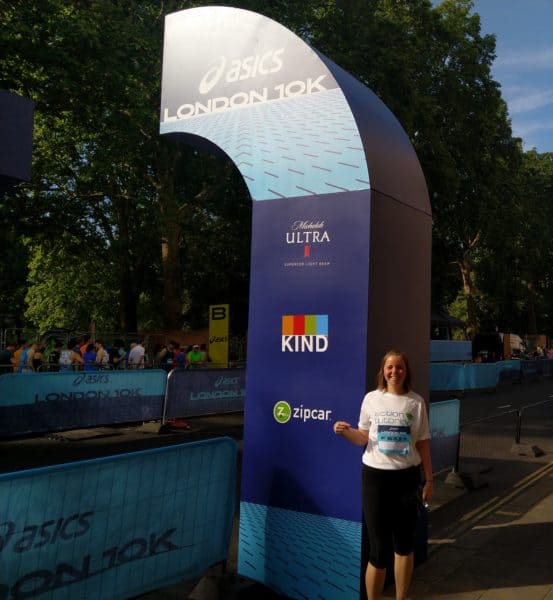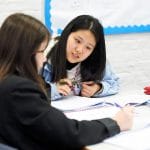Fear and Limiting Beliefs: How Your Pupils Might Have Stopped Before They Even Started
13 December 2019
A good friend of mine recently bought me a fantastic book called ‘The Student Mindset’ by Steve Oakes and Martin Griffin, a “30-item toolkit for anyone wanting to learn anything.” The book does exactly that – provides creative techniques and activities, combined with thought-provoking questions, all underpinned by the psychology and academia surrounding successful mindsets and behaviours. Plus, it discusses fear and anxiety – a topic that’s been playing on my mind over recent weeks (ironic, I know).
Fear, motivation and confidence usually come into focus closer to exams, but fear needs to be acknowledged, addressed and neutralised ASAP; then you can start making meaningful progress. I’ve been noticing fear since the start of term; pupils’ nervous faces, pale complexions and aggressive head-shakes at my “how were your mocks?” questions; tutors quietly quaking in the reception area ahead of meeting their pupils for the first time. Most fears are small and unnecessary, but they can have huge consequences on our mind, motivation and action.
‘The A B C of fear’
Drawing from the work of psychologist, Albert Ellis’, work (1957), the book highlights three barriers people face when attempting to learn something new, all underpinned by fear.
- “Activating Event” – an event that triggers fear, e.g. Year 11 pupils are told at the start of the year that this is going to be their hardest year of school so far and thus a lot rests on their grades, such as college and university.
- “Belief” – a limiting belief is created that reduces or obliterates motivation, e.g. over their school years, pupils have acquired the belief that they’re not intelligent and will never achieve the right grades.
- “Consequence” – g. pupils immediately feel GCSEs are too hard for them and they’ll never achieve. They switch off and stop trying, working far less hard than in previous years.
So how could we address these embedded beliefs and barriers and turn them into something positive? Ellis suggests “disputing” one’s limiting beliefs by asking questions, such as “what event or conversation has caused me to have this belief?.” Personally, I draw three rings on a piece of paper (diagram below): the inner ring with the question “when did I decide I wasn’t good at X?”, the middle “what have been the consequences of this?” and the outer ring “what 3 pieces of evidence tell me the belief is not true?” (Ellis calls these “energising alternatives.”) The purpose is not to dive deep inside the pupils’ psyches, but for them to realise that, at some conscious or unconscious level, there was a pin-point when they formed a belief about themselves and their ability, triggered by fear, and stopped taking positive action as a consequence. Most importantly – that limiting beliefs just aren’t true and can be changed! You don’t have to like a subject to work hard, but fear puts us off. We are only human, as they say!

So what’s my gift to you?
- Observe your pupils: is there a continual pattern of fear or lack of confidence that is preventing you from making meaningful progress? What activity can you do, or question can you ask, which will help acknowledge and address this fear?
- Observe yourself: how can you draw on times you’ve experienced fear (algebraic fractions still haunt my dreams…) and use this to support your group?
- And finally: have a look at ‘The Student Mindset’ by Oakes and Griffin. Buy it, borrow it, research it. I’ve got a plethora of mindset books, and this one is up there with the best.
Why I give my time to volunteer with Action Tutoring- Giving Tuesday
3 December 2019
The questions on the sheet blurred as tears of frustration rose in my eyes and I struggled to grasp the concepts needed to work out the answers. I was twelve years old and failing to understand how to work with negative numbers. Luckily, my maths teacher, realising I needed help with maths in general, had offered to let me stay after school to do some extra work.
“Okay, come stand over here,” he said. “This is zero. Now take three steps forward and you are at positive three. Now walk backwards (subtract) four steps – how far are you behind the point of zero? Now if you were to add negative steps, would you go forwards or backwards?”
When the inevitable lightbulb moment occurred, and I finally ‘got it’, the feeling when I knew I could grasp these difficult and new ideas was wonderful. It was like I had been given an incredible gift.
Originally, I wanted to give my time to volunteer with Action Tutoring because I wanted to contribute to society outside of work and was reading more and more about how inequality causes a large attainment gap between young people, which seems incredibly unfair. As a first-generation university student from a working-class background I have some insights as to how difficult it can be to achieve your best at school, especially when there are other external pressures that teachers may not be fully aware of or are unable to do anything about.
But, since I started volunteering with Action Tutoring, I now understand that this gift of learning is something that is bestowed on both the receiver of knowledge and the giver. It is incredibly rewarding to help the pupils learn new things and improve their skills, and their enthusiasm always makes me come away inspired for the week. It even inspired me to run a 10K to raise funds – something that I certainly found a challenge but helped me to strive towards a new achievement, something that the pupils are doing each and every day. The students are running mental 10Ks every day through their learning, and their teachers and tutors are the pacemakers.
I can’t recommend working with Action Tutoring enough – you get incredible support; the volunteer coordinators are so friendly and will bend over backwards to help you become a great tutor, and the students will teach you things about yourself you never even thought to ask for.

Elaine, after running the ASICS 10k to raise money for Action Tutoring



